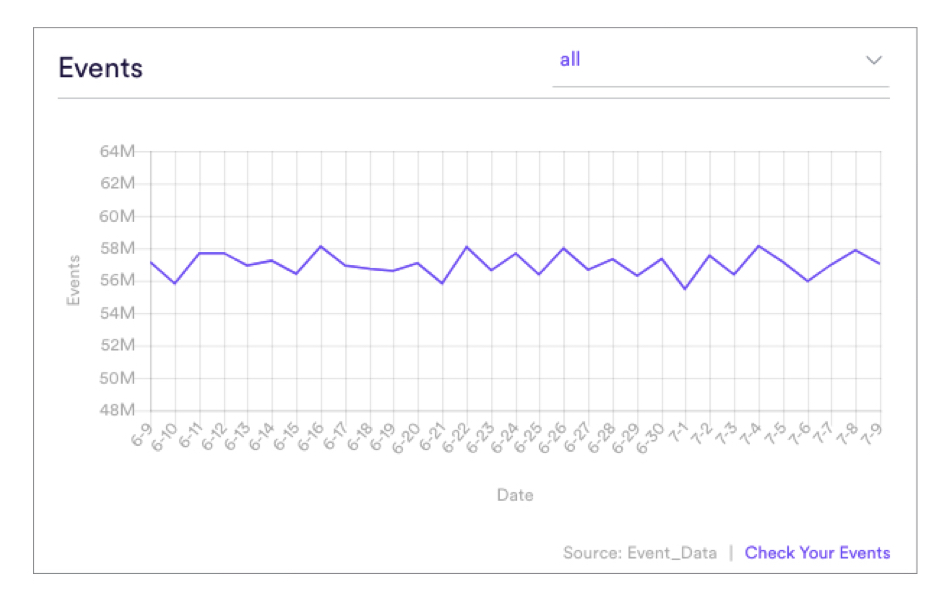
Understanding the health of your customer base is critical information for any business. As a result, marketers are constantly looking for ways to effectively predict customer churn. As discussed in this recent Quora post, churn modeling with Machine Learning (ML) provides an answer.
By using Cortex for ML-powered churn initiatives, Vidora’s partners can see a reduction in churn from 1-7% for their most at-risk user segments. Cortex is a self-service Machine Learning platform which allows anybody to build and deploy automated ML pipelines starting from scratch. It delivers sophisticated churn predictions for all your customers in real-time. Above all, it lets your team focus on the best strategies for using these predictions in practice.
Your Data
Firstly, you’ll need data to build a machine learning model. Typically, customer data is made of various events which occur over time. Some events are recorded every day, others less frequently. In almost all cases customers will generate an ongoing stream of events used to predict their health at any given time. Examples of events include when a customer:
- Buys a product
- Clicks on offer
- Is late paying a bill
Here’s where Machine Learning comes into play. To begin, by considering past examples of customers who have gone dormant, an ML algorithm can learn which pattern of events tends to predict future churn. Even more, it scores each of your current users in terms of how likely they are to churn going forward.
How much data do you need? We recommend at least 6 months of historical data to build a churn model. However, you may need more or less depending on the use case.
Building a Churn Model in Cortex
Cortex allows anyone to build sophisticated machine learning models with a few clicks by inputting raw data. Vidora facilitates this by automatically building Machine Learning Pipelines which transform raw data into predictions. The process consists of feature cleaning, feature engineering, and model selection. You can read more about Vidora’s Machine Learning pipelines here.
Building your Predictive Churn Pipeline
We’ve made Cortex as self-service and automated as possible to enable you to build a churn prediction model quickly and accurately.
Step 1 – Send User Events to Cortex
Vidora’s straightforward Event API allows our partners to send any type of events into Cortex. Just specify the event type, the time the event took place, and which user registered the event.
 Step 2 – Build the Machine Learning Pipeline in Cortex
Step 2 – Build the Machine Learning Pipeline in Cortex
Afterwards, select “Future Events” as your pipeline type in Cortex and specify with one click that you want your pipeline to predict retention.

Step 3 – Export your Predictions
Once the pipeline finishes training you will have a prediction indicating every customer’s likelihood of churn. Export this information to plug into your customer outreach tools. You can also access predictions via API to automate solutions.

Feature Importance/Impact and Custom Feature Engineering
In addition to easy pipeline creation, Cortex offers more functionality that can help you unpack the logic behind your pipeline’s predictions.
Through Pipeline Discoveries, Cortex helps you understand what features are most important to predict churn. Furthermore, it tells you what impact changing those features for specific user groups will have on their probability of churn. Here is more information on how to understand your Machine Learning Pipelines.
Custom Feature Engineering allows you to build your own predictive features in order to use your business knowledge within Cortex. In other words, it gives you the flexibility to augment the automatically generated features to refine performance.
Start Today!
Want to build your own customer churn pipeline and leverage other product features in Cortex? Contact partners@vidora.com to get started!


